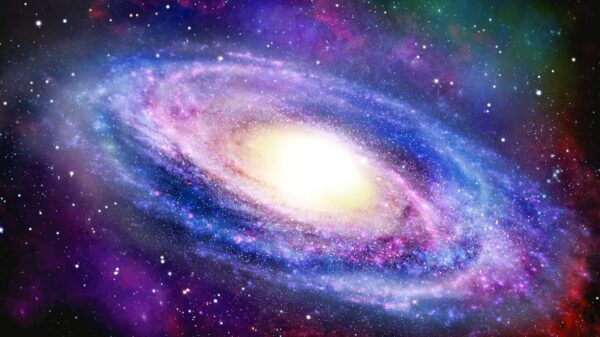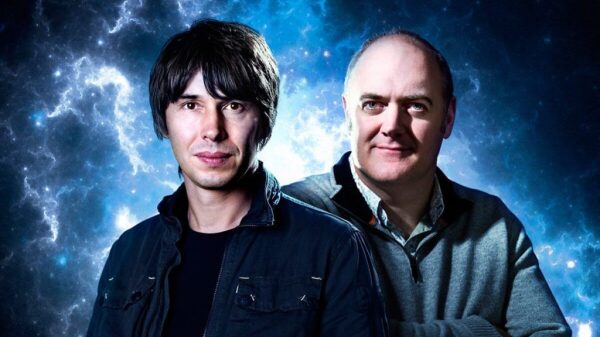Stargazing Live
Favorite
YEAR: 2010-2017 | LENGTH: 7 seasons 22 episodes + specials (60 minutes each) | SOURCE: BBC
description:
Professor Brian Cox and Dara O Briain are at Jodrell Bank Observatory, and joined by special guests to bring you the latest news and the best views of the night sky.
episodes:
season 1
01. Episode 1
Join Professor Brian Cox and Dara O Briain to wonder at the night sky, with extraordinary images beamed in from telescopes across the globe. Learn how to observe and take pictures over three busy days in the celestial calendar, with a meteor shower, a partial eclipse of the sun and the biggest planet in our solar system, Jupiter, burning bright.
Wannabe stargazer Jonathan Ross gets a crash course in planet spotting in his own back garden; while in Hawaii, Liz Bonnin reports from the edge of a volcano to help explain how the Earth was formed.
02. Episode 2
In the second of three live programmes, Professor Brian Cox and Dara O Briain look at images of the partial eclipse of the sun and investigate how stars are born.
Liz Bonnin shows us the sun in a different light – live from Hawaii; while novice star spotter Jonathan Ross discovers the key to observing constellations. Plus astronomer Mark Thompson demonstrates how to find our nearest galaxy, Andromeda.
03. Episode 3
Jonathan Ross joins Professor Brian Cox and Dara O Briain at Jodrell Bank, home of one of Britain’s biggest telescopes, for an hour of live stargazing.
The search for extraterrestrial life is the subject of Liz Bonnin’s report atop one of the world’s highest observatories in Hawaii, Brian chats to the crew of the International Space Station as they orbit the earth at 17,500 miles an hour, and Dara experiences what it is like to be in space.
season 2
01. Episode 1
Dara O Briain and Professor Brian Cox return to celebrate the wonder of our amazing night sky.
Live from Jodrell Bank observatory, the team kick off with a look at the mysteries of the moon and meet Captain Eugene Cernan, the last man ever to walk on its surface.
Liz Bonnin reports direct from South Africa on the differences between the constellations of the northern and southern hemispheres whilst Mark Thompson offers help on buying all the kit you need to get started in astronomy.
02. Episode 2
Dara and Brian’s journey through the night sky continues with a look at black holes, the most mysterious and destructive objects in the whole universe. Liz Bonnin finds out how our galaxy the Milky Way was formed and Mark Thompson investigates the problems that are caused by light pollution.
03. Episode 3
On the final night of their astronomical adventure, Prof Brian Cox and Dara O Briain discuss aliens, extra terrestrial life and the hunt for new worlds far outside our solar system. They also find out if they’ve been successful in their quest to find their own Stargazing planet.
Meanwhile, Mark Thompson attempts to tackle light pollution by getting the entire population of a small town to switch off all of their lights.
season 3
01. Episode 1
Dara O Briain and Professor Brian Cox celebrate our amazing night sky. They kick things off with the search for evidence of life on Mars and ask viewers for help to explore an uncharted area of the red planet’s surface. Liz Bonnin reports live from NASA mission control to find out the latest findings of the Curiosity Rover, whilst Mark Thompson offers tips on how to observe the moons of Jupiter.
02. Episode 2
Dara and Brian’s journey through the night sky continues with a look into the distant past, explaining how it is possible to chart the history of the universe by looking million of light years out into the depths of space. Meanwhile, Mark Thompson reveals what can be learned from the colours of the stars. At NASA, Liz Bonnin meets the team building the largest space telescope in the world, an instrument that’s 100 times more powerful than the Hubble.
03. Episode 3
On the final night of their astronomical adventure, Brian and Dara discuss meteors, comets and asteroids and reveal how studying them reveals information about the origins of life on Earth. Meanwhile, LizBonnin meets the NASA team tasked with tracking any space objects on a collision course with Earth. The results of the experiment carried out by the Stargazing viewers – to explore an uncharted area on the surface of Mars – are also revealed.
season 4
01. Episode 1
In the most ambitious series to date, Brian Cox and Dara O Briain are back at Jodrell Bank Observatory, in the first of three live shows with the latest news and the best views of the night sky.
This time the team have taken on an astonishing challenge – to capture one of the top highlights of the solar system – the mysterious and elusive northern lights. But will the lights reveal themselves? Liz Bonnin reports live from within the Arctic Circle, joining aurora researchers in northern Norway, who will help her unravel the secrets of this eerie spectacle.
Brian and Dara have the very latest weather reports from around the solar system. They welcome celebrated NASA scientist Dr Carolyn Porco, who shares some of the most jaw-dropping pictures of the solar system ever beamed back to Earth: Saturn’s gigantic storms and baffling hexagonal clouds taken by the Cassini probe.
Dara witnesses the launch of a new NASA mission to Mars, while resident stargazer Mark Thompson chases clear skies to show the best of what there is to see above the UK.
And if the January weather is not for you, you can help the team search for undiscovered galaxies from the comfort of your own living room.
02. Episode 2
Brian Cox and Dara O Briain host the second night of their three-day stargazing extravaganza from Jodrell Bank Observatory, where they are joined by two generations of astronauts. Walt Cunningham was one of the first ever crew to fly an Apollo spacecraft into orbit, while Commander Chris Hadfield recently returned from months aboard the International Space Station.
Liz Bonnin attempts a world-first, reporting live from a plane 28,000 feet above the Arctic Circle, as she steps up her mission to capture the Northern Lights.
Dara finds out how it feels to be truly weightless on the infamous ‘vomit comet’ aeroplane. Brian describes how scientists are tackling the problem of interstellar travel, and the team reveal never-before-seen images from around the solar system.
Meanwhile, resident astronomer Mark Thompson navigates using the stars, and takes an unprecedented look at the 400-year-old giant storm on Jupiter, as it moves into view live during the programme.
03. Episode 3
Brian Cox and Dara O Briain raise the stakes in the final night of their astronomy extravaganza, and reveal the results of their viewers’ challenge to find undiscovered galaxies at the edge of space.
Reporting live from above the clouds in Norway, Liz Bonnin has one last chance to capture the spectacular Northern Lights, using super-sensitive cameras.
Brian reveals why no-one really knows what our own galaxy, the Milky Way, really looks like, and how the remarkable Gaia space probe is set to change all that by mapping a billion of our neighbouring stars.
With his sights set on a weekend break to a distant planet, Dara prepares to suffer as he straps himself into a human centrifuge to find out whether humans can accelerate to light speed.
Meanwhile, resident astronomer Mark Thompson joins thousands of amateur astronomers at one of the spectacular stargazing parties taking place across the country, and looks ahead at the treats the night sky has in store over the year.
season 5
01. Episode 1
Brian Cox and Dara O Briain are back at Jodrell Bank Observatory, building up to one of biggest astronomical events of the decade – a solar eclipse. They are joined by legendary Apollo astronaut Buzz Aldrin, who tells them why he believes we must look beyond the moon for mankind’s next giant leap.
At NASA Brian makes his own attempt to land a lunar module, while Dara finds out what happened to the moon rocks brought back from the lunar surface.
Liz Bonnin prepares to take to the skies for the perfect view of the eclipse – from above the clouds. New resident Stargazer, Dr Lucie Green, reveals how to get the most from moongazing.
From behind the scenes at Europe’s spacecraft test centre, Dallas Campbell gets to grips with the robots which could revolutionise space exploration.
Viewers are asked to help search for exploding stars to help refine the known age of the universe.
02. Episode 2
The countdown to the solar eclipse continues. Brian Cox and Dara O Briain are joined at Jodrell Bank Observatory by legendary Apollo astronaut Buzz Aldrin, along with Dr Matt Taylor, who updates them on the European Space Agency’s Rosetta mission after last year’s groundbreaking touchdown on comet 67P.
Liz Bonnin reports live from the Faroe Islands as she steps up her mission to take to the skies and beam back the most spectacular images of Friday’s solar eclipse. The team reveals how to view the eclipse safely and Brian ponders how the movements of our solar system mean we can predict the next eclipse to the second.
Dara investigates whether asteroid mining might be the next booming market and Dr Lucie Green has news of the very rare appearance of five planets during the daytime.
03. Episode 3
Brian Cox and Dara O Briain host their final night of stargazing from Jodrell Bank Observatory where, following the day’s extraordinary events, they have exclusive images from the solar eclipse. Brian alsoreveals the latest discoveries and solar secrets of our nearest star, whilst Liz Bonnin discovers how a new generation of missions to the sun will fly closer than ever before.
Live from the heart of the European Space Agency’s spacecraft test centre in the Netherlands, Dallas Campbell discovers how they recreate the harsh conditions of space here on earth and resident stargazer Lucie Green takes a closer look at the North Star.
Plus the team reveal the results of this year’s stargazing challenge – to hunt for supernovae, exploding stars which could help revise the known age of the universe.
04. Eclipse Live
Dara O Briain and Professor Brian Cox are joined by a team of reporters and experts as they host live coverage of the biggest astronomical event to be seen in Britain’s skies this decade. To bring you the best possible views, Liz Bonnin beams live pictures of the eclipse from a specially equipped plane high above the clouds.
On the Faroe Islands, Watchdog’s Chris Hollins is amongst thousands of people who have travelled from around the world to witness the jaw-dropping spectacle of a total eclipse. Stargazing’s own solar scientist, Dr Lucie Green, joins Newsround’s Leah Boleto and hundreds of children carrying out a nationwide experiment to see how the weather changes during the eclipse. And BBC weather presenter Carol Kirkwood tells us where in the country you are likely to get the best views.
season 6
01. Episode 1
Brian Cox and Dara O Briain return for another celebration of space and astronomy. This series they talk to British astronaut Tim Peake as he orbits 250 miles above the Earth. Tim reveals how he is settling into life on the International Space Station just one month after his launch into space. Brian and Dara also attempt to make a garden shed fly, as they explore what keeps the ISS in space.
Roving reporter Liz Bonnin reports live from the European Astronaut Centre in Cologne, where she finds out whether comedian John Bishop has the ‘right stuff’. A lifelong astronomy fan, John will be following astronaut Tim Peake’s training programme over three nights, starting with a live, simulated space-walk – underwater.
Brian and Dara are joined in the studio by NASA scientist Carly Howett to enjoy some spectacular new views from the surface of Pluto, as well as exploring some of the biggest planets and stars in the universe. They will also be asking for your help to find new pulsars – spinning stars that are heavier than the Sun, yet smaller than Manchester. Meanwhile, Professor Lucie Green will be on hand to guide you around the night sky and to show you how to photograph the International Space Station.
02. Back to Earth
Brian Cox and Dara O Briain are joined by a panel of stellar guests to delve deeper into the universe after a night of Stargazing Live. NASA’s Carly Howett discusses 2015’s New Horizons mission to Pluto, sharing some of the astonishing discoveries made possible by the images and data still being sent back from the probe.
Also in the studio, Professor Chris Lintott explores the strange world of pulsars – spinning stars that are heavier than the Sun, yet smaller than Manchester – and explains how Stargazing viewers can make their own contribution to astronomy by discovering new ones over the next three nights.
The panel will be answering viewers’ questions, as well as enjoying their photographs of the night sky, including the International Space Station.
03. Episode 2
Brian Cox and Dara O Briain return for their second night celebrating space and astronomy, with more updates from British astronaut Tim Peake as he tackles his six-month scientific mission, 250 miles above the Earth. Brian and Dara also explore the amazing engineering behind the International Space Station, demonstrating the catastrophic impact that ordinary atmospheric pressure can have on a space ship.
Roving reporter Liz Bonnin reports live from the European Astronaut Centre in Cologne, where she is testing whether comedian John Bishop has the ‘right stuff’. A lifelong astronomy fan, John will be following astronaut Tim Peake’s training programme over three nights – tonight, what happens if there is an emergency on the Space Station.
Brian and Dara are joined in the studio by European Space Agency director general Jan Woerner to explore Europe’s ambitions for colonising the Moon, and they reveal which parts of the UK most resemble other planets in the Solar System. They have updates from the Hubble Space Telescope on its 25th anniversary, and also from the Rosetta mission, which landed on a distant comet in 2014. Meanwhile, Professor Lucie Green is on hand to guide you around the night sky.
04. Episode 3
Brian Cox and Dara O Briain return for their third night celebrating space and astronomy, with more updates from British astronaut Tim Peake. This time they explore what keeps Tim and his International Space Station crew-mates safe in the hazardous environment of space. Brian and Dara also welcome a very special guest to take the gravity challenge – and find out what it would feel like to walk on Mars and the Moon.
Roving reporter Liz Bonnin once more reports live from the European Astronaut Centre in Cologne, where she tests whether comedian John Bishop has the ‘right stuff’. A lifelong astronomy fan, John will be strapped into a giant centrifuge machine to experience how future astronauts will simulate gravity during missions into deep space.
Brian and Dara are joined in the studio by Dame Jocelyn Bell-Burnell, to hear how she discovered the first pulsar star – giving astronomers all over the world one of their most precious tools for studying the universe. They also find out whether Stargazing viewers have discovered any new pulsars in their three-night search, training Jodrell’s famous telescope onto them to reveal exactly what has been discovered, and how much that means to astronomers.
05. The Spacewalk
As British astronaut Tim Peake exits the safety of the International Space Station for his very first spacewalk, Brian Cox and Dara O Briain watch him every step of the way in this Stargazing Special. They are joined by someone with a unique insider’s view and who has done this himself, astronaut and former Space Station commander Chris Hadfield. Find out about the perils that Tim is facing and what is really going on as he carries out time-critical emergency repairs in the dangerous vacuum of space.
season 7
01. Episode 1
Stargazing Live is back for its seventh year – this time promising to blow your mind with a totally new view of the night sky – live, from the bottom of the world!
Professor Brian Cox and Dara O Briain have packed their sunscreen and headed to Australia to gaze up at a sky that will be completely unfamiliar to viewers in the UK – packed full of the most astonishing features from constellations like the Southern Cross, famously featured on Australia’s flag, to jewel-like clusters of stars and perfectly positioned planets. But capping it all is the most remarkable view of the Milky Way, arching overhead like a river of stars. Join them live as they finish a long night under the stars, and as dawn approaches in Australia.
Brian and Dara are joined by Liz Bonnin and Aussie outback-astronomer Greg Quicke as their guide to the southern sky. Surrounded by kangaroos, snakes and spiders, the team reveal the wonderful star-tales told by indigenous people, embark on a mission to catch a shooting star and celebrate Australia’s role in rescuing the stricken Apollo 13 moon mission. Plus, we ask viewers’ help in a challenge to find the missing ninth planet in the solar system.
02. Episode 2
Stargazing Live is back for a second night of spectacular night-sky views from Australia. Join Professor Brian Cox and Dara O Briain live as they complete another long night under the stars down under, andwatch the glorious stars of the southern sky gradually twinkle away to reveal the coming dawn.
Tonight, unprecedented views of Saturn are the big prize. Aussie astronomer Greg Quicke reveals more ancient tales from the indigenous astronomers of Australia, explaining why the moon looks upside down in Australia and showing us the remarkable link between the moon and the Great Barrier Reef. We hear more about life on top of this remote mountain amongst the kangaroos and spiders of the Aussie outback – none of which stops the astronomers here making some amazing discoveries, including the oldest known star in the universe.
03. Episode 3
Join Professor Brian Cox and Dara O Briain live from Australia, as they complete their three-night mission to bring you the most glorious sights of the southern night sky.
From their remote mountain top beside the vast Warrumbungle National Park, Brian and Dara share another night of beautiful views, wandering kangaroos and spectacular landscapes. In the company of Liz Bonnin and with Aussie outback astronomer Greg Quicke as their guide to the southern sky, they reveal how the apparently monochrome sky at night is in fact a riot of glorious colour.
Brian and Dara also reveal how Australia, which faces directly into the heart of our Milky Way galaxy, is in the front line when it comes to protecting our planet – whether it be from the threat of a giant asteroid impact or from contact with alien life. And we hear how the Aussie outback contains secrets that Nasa hope will lead them to alien life on Mars.
And will viewers have managed to find the elusive missing ninth planet in our solar system?
SIMILAR TITLES:
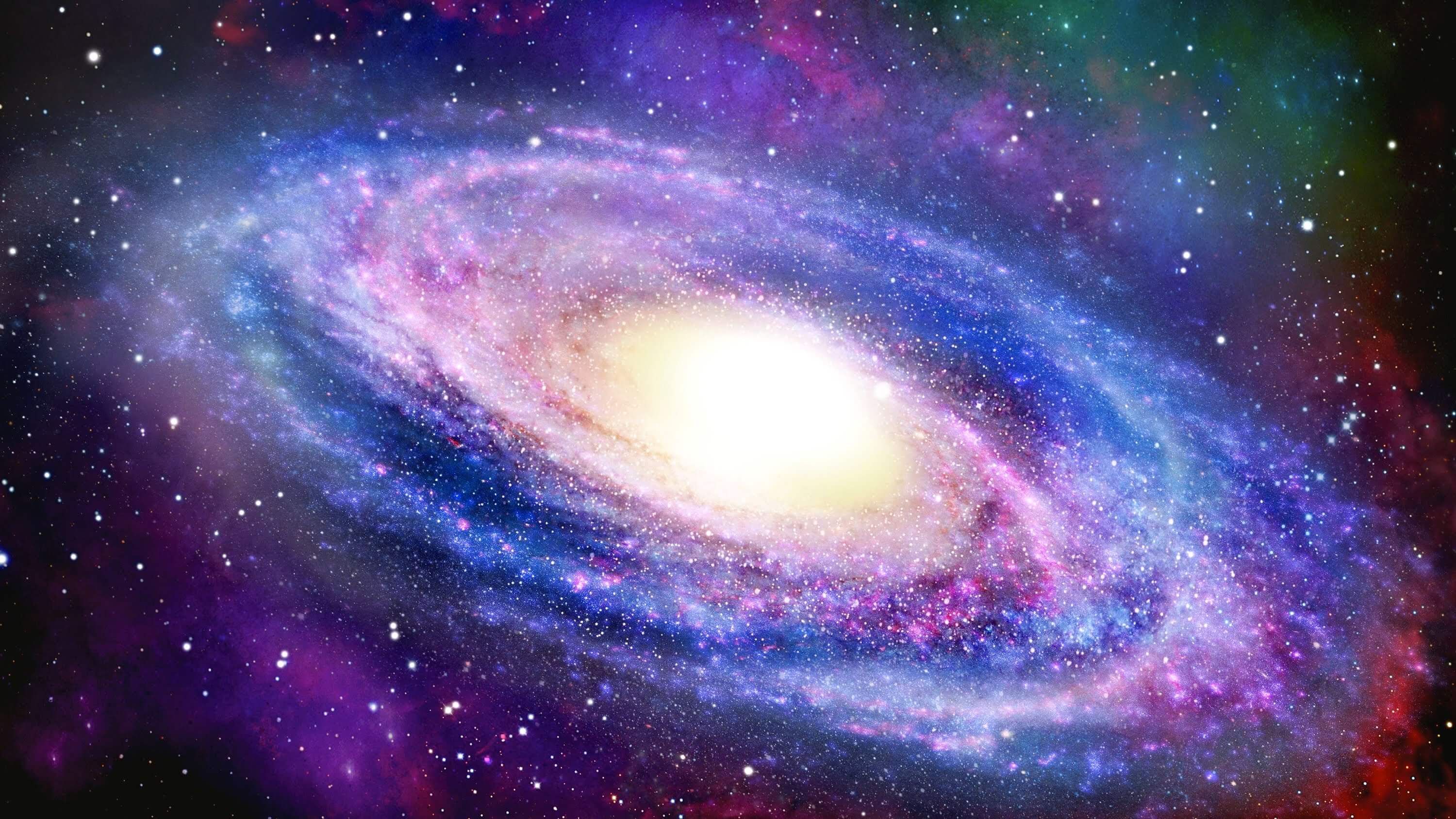
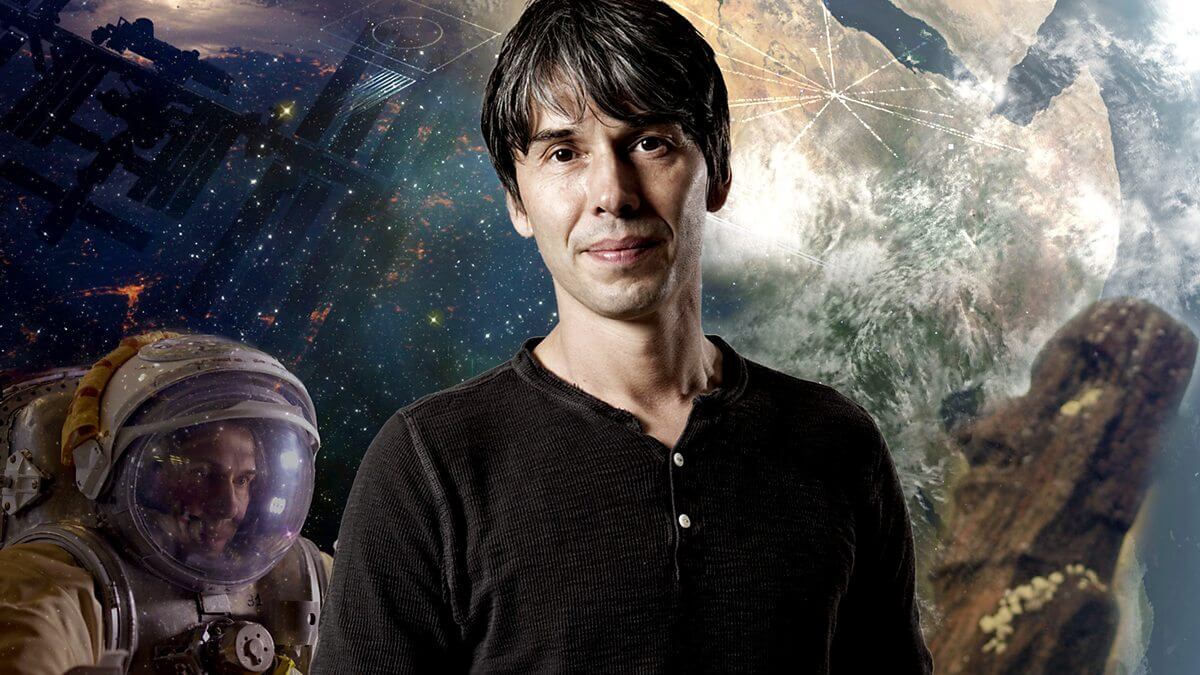
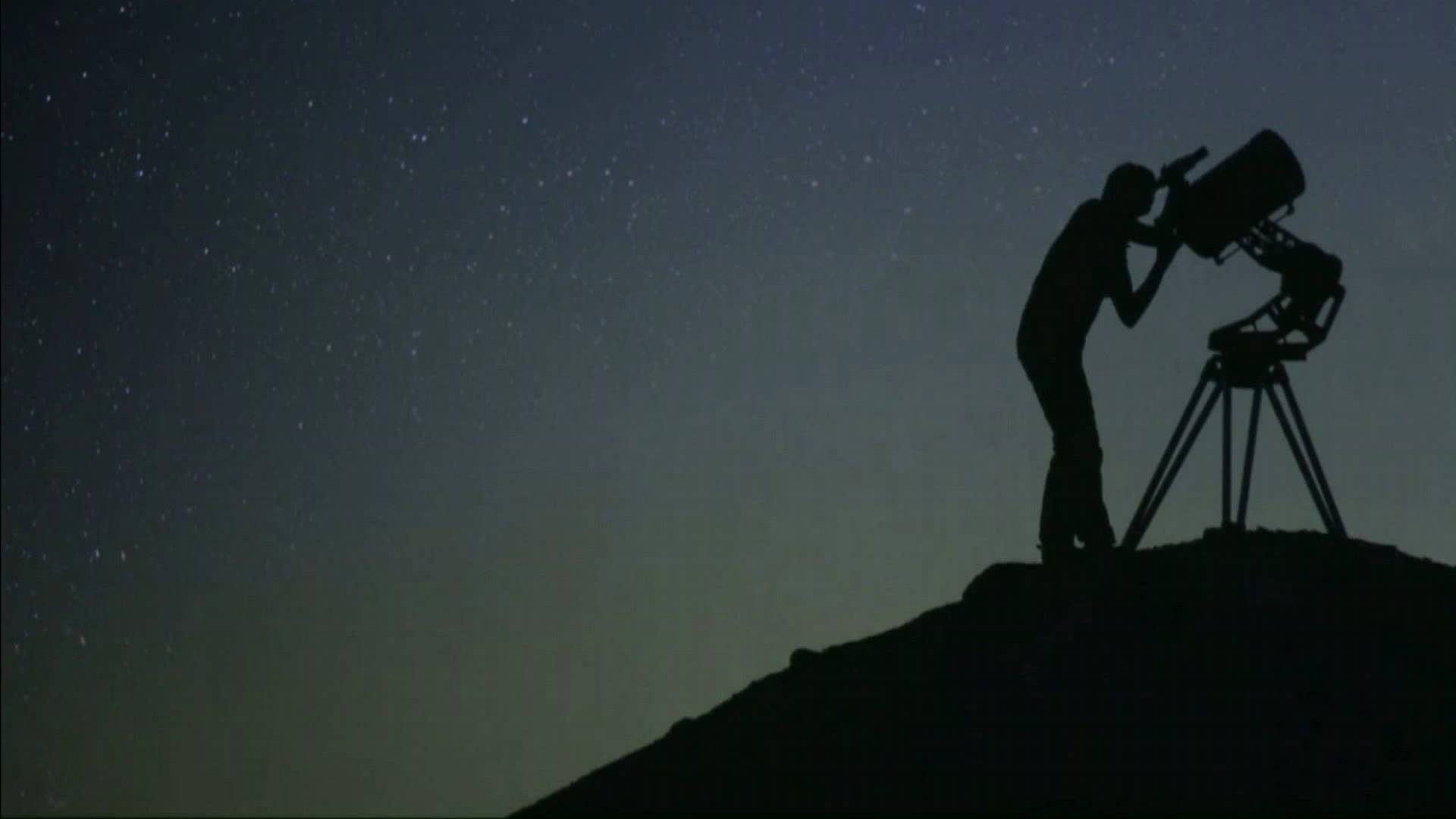
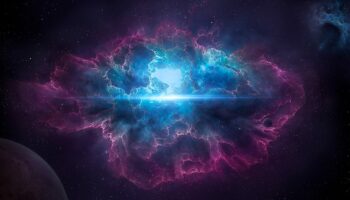
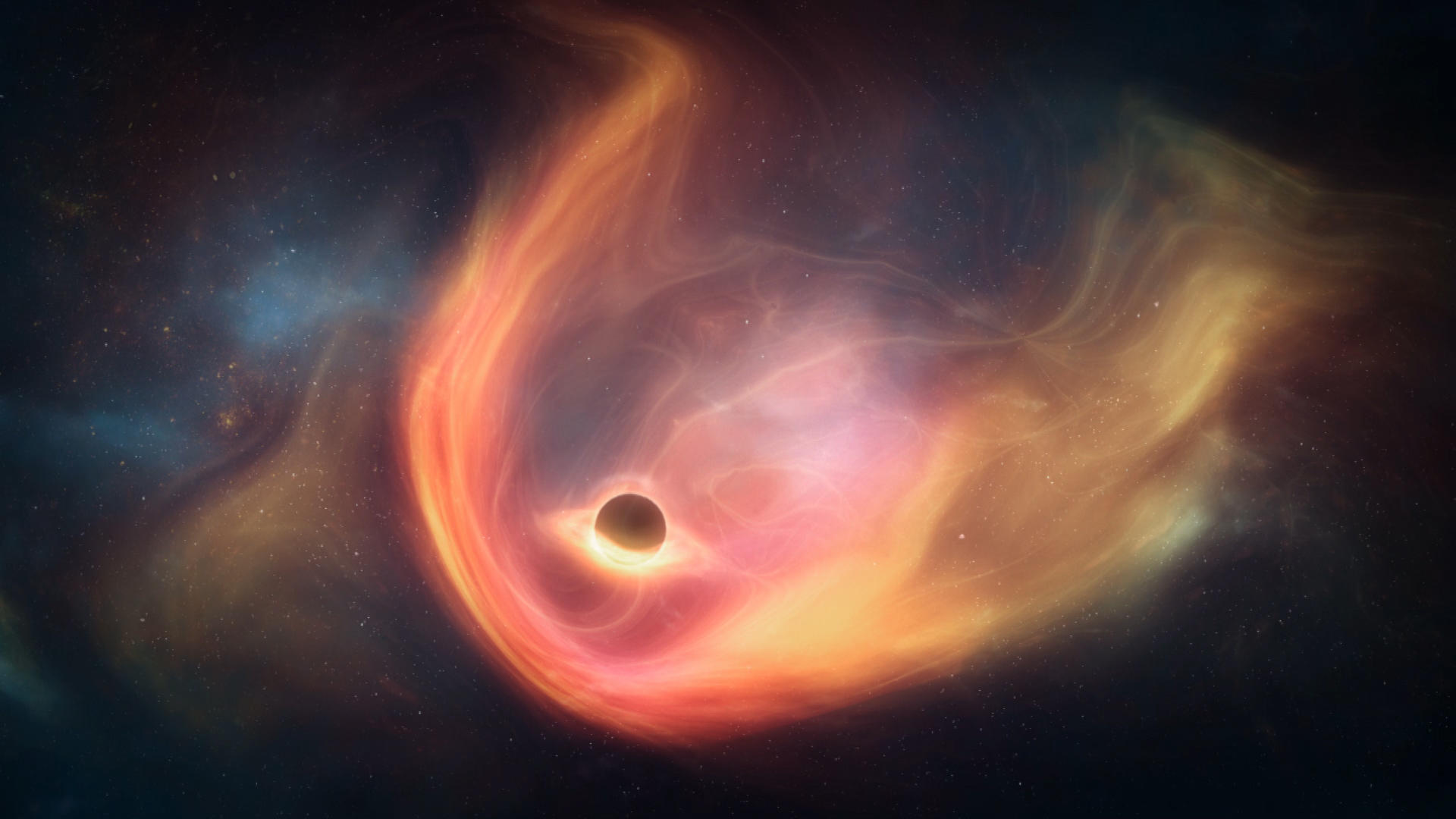
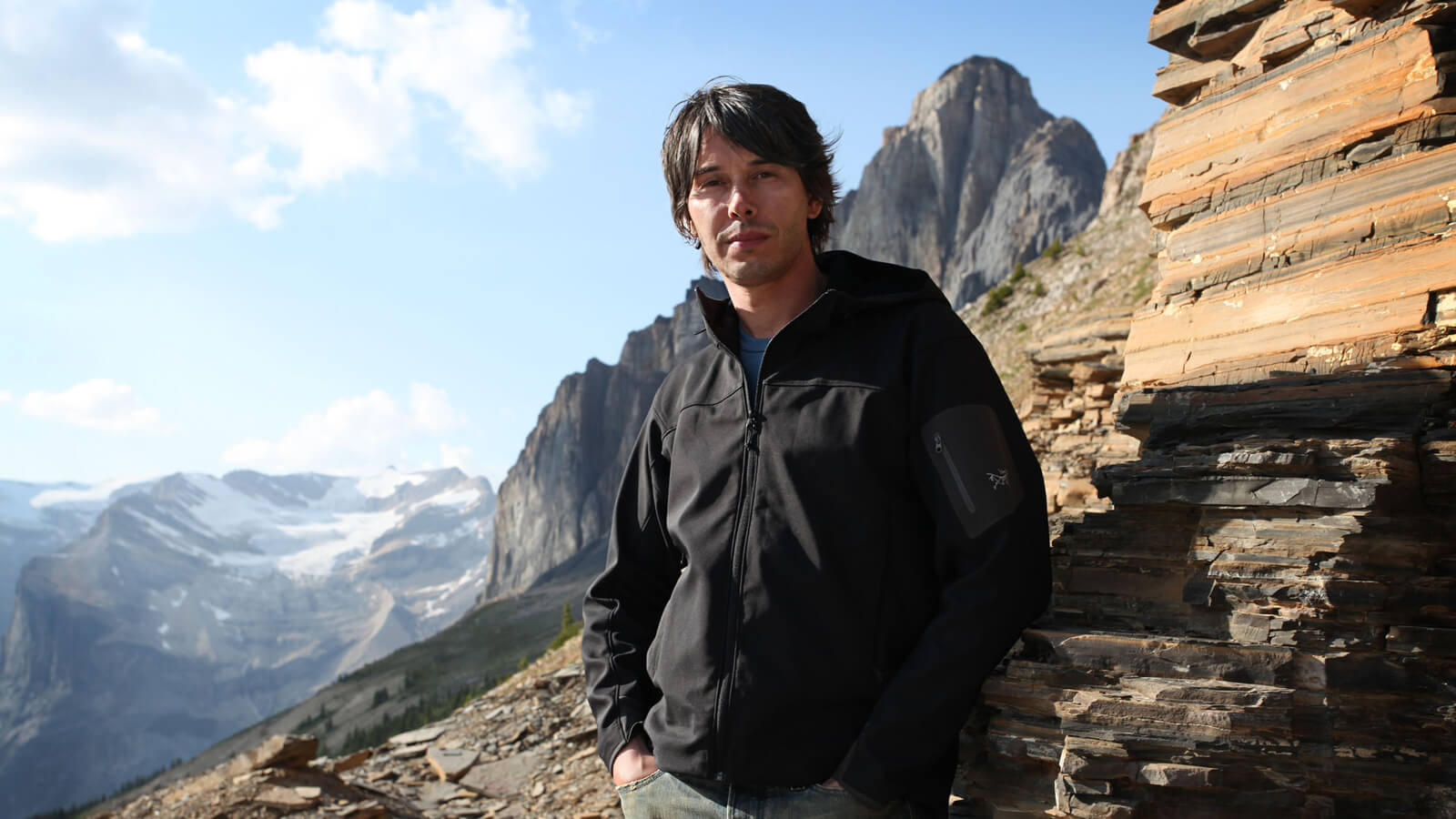
The Universe
Favoritetrailer
YEAR: 2007-2016 | LENGTH: 9 seasons 89 episodes (45 minutes each) | SOURCE: WIKIPEDIA
description:
The Universe is an American documentary television series that features computer-generated imagery and computer graphics of astronomical objects in the universe plus interviews with experts who study in the fields of cosmology, astronomy, and astrophysics. The program is produced byFlight 33 Productions and Workaholic Productions.
The series covers topics concerning space exploration, the solar system, and astronomical objects in the universe. It shows CGI renderings of these aforementioned, video footage, photographs, and views from scientists, project managers, engineers, advocates, writers and other experts. The episode “7 Wonders of the Solar System”, and Season 6 were produced in 3D.
episodes:
season 1
01. Secrets of the Sun
A look at how the Sun was formed and how it could potentially die; its physical composition; how it makes energy; and the nature of solar eclipses, solar flares, and sunspot activity.02. Mars: The Red Planet
A look at the planet Mars, the planet most similar to Earth in our solar system; an examination of Olympus Mons the largest volcano in the solar system; how NASA probes search for evidence of past life on the red planet, and what that life might have looked like.03. End of the Earth
A look at end of the world scenarios involving killer asteroid or comet impact events, solar flare and gamma-ray bursts, and the plans that scientists have to potentially save the Earth from an interstellar disaster.04. Jupiter: The Giant Planet
A look at the solar system’s largest planet, Jupiter; its formation and composition and its mini-solar system of over 60 moons – some of which may have the potential to support extraterrestrial life.05. The Moon
A look at the formation of the Moon; how it played a role in the evolution of life on Earth; and the future plans of NASA to establish a permanent baseon the surface.06. Spaceship Earth
A look at the planet Earth; how it was born out of a chaotic shooting gallery during the formation of the solar system; how life could have begun here; and what could ultimately cause its destruction.07. Mercury & Venus: The Inner Planets
A look at the two most hostile planets in the solar system – Mercury and Venus; one gouged with craters, the other a greenhouse cauldron of toxic gases and acid rain; both scorched by their close proximity to the sun. Scientists theorize about what sort of life could evolve on these alien worlds.08. Saturn: Lord of the Rings
A look at the planet Saturn and its fascinating rings; how they may have been created; how the latest probes have answered questions and revealed new mysteries about the planet, and how Saturn’s moon Titan may hold more resources of petroleum than Earth will ever need.09. Alien Galaxies
A look at space through the amazing images of the Hubble Space Telescope; and a look at the formation of our galaxy and how it is just one of hundreds of billions in the universe.10. Life & Death of a Star
A look at stellar evolution; how gravity causes hydrogen gas to coalesce under friction and pressure to ignite in a flash of nuclear fusion, the energy and glow lasting billions of years, and then the ultimate demise in the largest and most colorful explosions in the cosmos.11. The Outer Planets
A look at the solar system’s most distant worlds – Uranus, a gas giant with the most extreme axial tilt of any known planet and its wildly orbiting moonTriton; its near-twin Neptune and its moons; and finally, distant Pluto which orbits the sun every 248 years.12. Most Dangerous Places
A look at the most dangerous objects known in space – all consuming black holes, deadly gamma-ray bursts, powerful magnetars, and galactic collisions.13. Search for E.T.
A look at possible extraterrestrial life in the universe; the mission of organizations like SETI to find it, and the possibility of extraterrestrial life existing right in our own solar system on the moons of Europa and Titan.14. Beyond the Big Bang
A look back in time billions and billions of years to the origin of the Big Bang. Leading physicists and historians theorize what happened before the bang occurred, how the physical nature of the universe unfolded as energy became matter forming stars and galaxies, and how the universe continues to expand outward at an ever-accelerating rate.season 2
01. Alien Planets
A look at the science of planet hunting; astronomers explain the technology and methods used to find extra-solar planets – worlds outside our solar system orbiting other stars; and a look at some of the most interesting planets that have been discovered, such as “Hot Jupiters” and “Super-Earths.”02. Cosmic Holes
A look at the mysteries of black holes and theories about the existence of other kinds of holes, such as “mini” or microscopic black holes that exist at the atomic level; “white holes” – the opposite of black holes where matter is eject out; and “wormholes” – gateways in hyperspace that connect points in space and time and possibly lead to other dimensions.03. Mysteries of the Moon
A look at the Moon and the role it has played in the history of mankind – how it was once worshiped as a god; used as a timekeeper by farmers; a beacon for sailors at sea; and how it effects ocean tides and the behavior of animals. Also discussed is the transient lunar phenomenon which has baffled scientists for centuries.04. The Milky Way
A tour of the Milky Way; a look at the massive black hole with the mass of thousands of suns, that lies at its center; how the death of old stars provide the material to create new ones; and how stars from the galactic center are being catapulted beyond the outer arms at unimaginable speeds.05. Alien Moons
A look at Kuiper belt objects and the moons of the solar system such as volcanic Io, ice covered Europa, and the mysterious Triton; scientists and physicist theorize as to what discoveries could be found there. .06. Dark Matter/Dark Energy
A look at the theory of dark matter – the undetectable mass thought to make up 96% of the universe, and dark energy – the unseen force that is expanding the universe. Physicists use the latest cutting-edge technology and conduct groundbreaking experiments in an attempt to discover more about these mysterious forces.07. Astrobiology
A look at the science of astrobiology – the search for life in space by combining the disciplines of astronomy, biology and geology; a look at how life could evolve on planets vastly different than Earth; and a trip to an area in Australia to search for the oldest forms of life on Earth and what it could teach us about life on other worlds.08. Space Travel
A look at some revolutionary ideas about travel in space, from ship designs to innovative methods of propulsion such as solar sails and laserbeams. Also a look at antimatter as a power source and the possibilities of faster-than-light travel that could make the greatest science fiction dream a reality.09. Supernovas
A look at the sensational death of stars in supernova explosions which shine as bright as a 100 billion suns and release jets of high-energy matter asgamma-ray bursts and x-ray radiation. Also a look at supernovas recorded throughout history and how stardust creates the building blocks of planets and life.10. Constellations
A look at some of the 88 constellations in the sky which are arrangements of stars that form a picture or symbol. Also how ancient civilizations developed and used them for navigation and exploration.11. Unexplained Mysteries
A look at some of the myths, misconceptions and facts about the universe, from life on Mars to whether or not time travel is possible and ifEinstein’s theories of relativity could support it.12. Cosmic Collisions
A look at the cosmic shooting gallery of the universe; what happens during comet, asteroid and planetary collisions; the effects of mass extinction impacts; what happens when stars collide, and when entire galaxies merge together.13. Colonizing Space
A look at the efforts underway to establish permanent human colonies on the Moon and Mars; how food will be grown and waste recycled and eventually the plans to terraform Mars to make it more habitable for humans.14. Nebulas
A look at nebulas – the “art gallery of the galaxy” – amazing regions of space, where old stars die and new ones are born. Astronomers reveal the techniques and technology used to capture the details and wonder of these distant objects, many of which are too far away to be seen by the naked eye.15. Wildest Weather in the Cosmos
A look at bizarre weather phenomena on other worlds in our solar system such as tornadoes with 6,000 MPH winds, and rain made of iron.16. Cosmic Collisions
A look at the cosmic shooting gallery of the universe; what happens during comet, asteroid and planetary collisions; the effects of mass extinction impacts; what happens when stars collide, and when entire galaxies merge together.17. Biggest Things in Space
A look at the biggest things in the universe, such as the cosmic web which connects galaxies together along threads of dark matter or the Lyman-alpha blob which is a bubble containing countless galaxies. Also a look at super-galaxies, super massive black holes, “radio lobes” and the biggest void in space.18. Gravity
A look at how the universe could end with various theories explored such as a “random quantum fluctuation” where everything is obliterated in the blink of an eye; where all energy is consumed and ends in a “cosmic ice age”; where everything collapses into black holes and disappears, and how there is nothing we can do to prevent the cosmic doomsday.19. Extra Backyard Astronomers
No Description.season 3
01. Deep Space Disasters
A look at the history of space disasters and the potential for danger in space – from explosive launches, fiery reentries, fire in an oxygen-rich atmosphere, deadly micrometeoroid impacts, catastrophic solar flares and a host of other space hazards astronauts risk on every mission. Also discussed are what could happen if a ship encounters a black hole or gamma-ray burst.02. Parallel Universes
A look at the theory of the multiverse – the possibility of parallel dimensions existing where Earth and everyone on it are duplicated many times over, and how physicists search for evidence of these doppelganger realities using state of the art particle colliders that can detect higher dimensions of existence.03. Light Speed
A look at the speed of light, the ultimate speed limit enforced by the laws of the universe, and how scientists are looking for ways to exceed it; a look at what happens when we reach the “light barrier”; what could happen if we surpass it, and how the “cosmic constant” can be manipulated.04. Sex in Space
A look at experiments in human sexuality in space; the psychology of relationships and reproduction that must be addressed if mankind wish to colonize other planets; how pregnancy and birth could be handled in microgravity and the complications that could arise under such conditions; and the answer to whether or not sex has already been attempted during a space mission.05. Alien Faces
A look at how differently life on Earth has evolved between animals, from the deep ocean to those on land, their environments played a role in their design; and an imaginative look at how similar life could take form under vastly different environments of alien worlds.06. Deadly Comets and Meteors
A look at how comets and meteors played a role in the formation of the solar system; their possible role in the extinction of the dinosaurs; and the theories that cometary dust could bring alien viruses to Earth.07. Living in Space
A look at how human colonies could exist in space, from domed cities to underground bases, to orbital habitats, to hollowed-out asteroids. Also a look at how robots will play a role in space survival; how food will be grown; the advances in space suit and equipment technology; and a look at how resources could be gathered and processed to sustain such otherworldly colonies.08. Stopping Armageddon
A look at some of the ideas scientists are exploring to save Earth one day from an inevitable meteor impact, including ways to divert near-Earth objects (NEOs) with laser beams, nuclear bombs, solar sails, satellites that act as artificial gravity sources, and rocket engines that could attach to and push them out of Earth’s path.09. Another Earth
A look at how astronomers search for other Earth-like planets around other stars; which stars are candidates for possible discovery; and how techniques develop and the sensitivity of equipment improve will make finding another Earth just a matter of time.10. Strangest Things
A look at some of the most bizarre things in the universe such as odd moons, strange stars, exotic particles, mysterious black holes, and invisible dark matter.11. Edge of Space
A look at the prospects for the commercialization space, from $20 million vacation trips to the ISS, the possibility of orbital hotels, and spaceplane flights 120 miles above the Earth are just the beginning. Also a look at the hazards, such as cosmic radiation and space debris, that could spell disaster for these outerspace endeavors.12. Cosmic Phenomena
A look at various cosmic phenomena, both “good” – such as the beauty of the aurora borealis, the thrill of a meteor shower, the miracle of photosynthesis, and the “bad” – such as UV radiation that can “get under our skin”, and solar flare activity that can not only scramble electronics, but could threaten life on Earth.season 4
01. Death Stars
A look at real life “death stars” that are far worse than the one in Star Wars such as supernovas that unleash massive gamma-ray bursts (GRB) that could eradicate all life for thousands of light years; a look at “WR104”, a dying star 8000 light years away that could point a GRB right at Earth, and “3C321”, a “death star galaxy” that could be a terrifying vision of what may befall the Milky Way galaxy. Eta Carinae and Betelgeuse are given as examples of stars that could have violent ends that are too close for comfort.02. The Day the Moon Was Gone
A look at the importance of our moon and what the Earth would be like without one, such as a four hours of sunlight, pitch-black nights, 100 MPH winds spawning massive hurricanes, wild fluctuating climate changes as the planet topples on its axis, and the end of complex life forms – including humans.03. It Fell From Space
A look at some of the thousands of objects, both natural and man made, that have plummeted to Earth. From space rocks that have crashed into homes, to rocket parts that have landed on front lawns, scientists share their amazing insights into the phenomena of the cosmos from the study of this space debris.04. Biggest Blasts
A look at some of the biggest explosions known, from the “Big Bang”, to incredible supernova blasts, to the massive impact of the Chicxulub asteroid on the Yucatán Peninsula that was believed to have wiped out the dinosaurs 65 million years ago.05. The Hunt for Ringed Planets
A look at planetary rings, especially those of Saturn where house-sized chunks of ice orbit at 53,000 MPH along a chaotic orbital racetrack; how the rings formed and the dangers they pose to spacecraft. Also a look at other rings around Jupiter, Uranus, Neptune, and possibly Mars; plus Earth’s “ring” which is made of some 200 satellites in geosynchronous orbit – the only “man made ring” in the known universe.06. 10 Ways to Destroy the Earth
A look at ten events experts envision, (both fun and serious), that could destroy the planet Earth – such as being swallowed up by a microscopic black hole, exploding it with antimatter, hurling it into the sun, and switching off gravity.07. The Search for Cosmic Clusters
A look at star clusters; how all stars within them are formed from the same material and are approximately the same age; a look at the two kinds of clusters – “open clusters” which are young and exist in the spiral arms of the galaxy, and “globular clusters” which are old and exist in the outskirts of the galaxy and possibly as old as the universe itself.08. Space Wars
A look at military concepts to weaponize space; how such systems would work and how effective would they be, such as an idea of telephone pole-sized rods that could be hurtled down from orbit. Also a look at some more fantastic weapon ideas and defenses against such weapons, such as ground base lasers.09. Liquid Universe
A look at places in the universe where it rains droplets of liquid iron, places at hundreds of degrees below zero where there are oceans of liquidmethane, and at the center of gas giants where pressure is so great there exists liquid metallic hydrogen.10. Pulsars & Quasars
A look at pulsars – tiny objects (only a few miles across) with powerful magnetic fields that spin so fast they appear to blink on and off; and quasars– the remnant cores of ancient galaxies that are so distant from us that they may be the oldest things in the universe.11. Science Fiction, Science Fact
A look at fantastic technology concepts, once mocked by physicists, that could be just over the horizon, such as teleportation, anti-gravity, and breaking the light speed barrier. Once only achieved by Hollywood, these concepts are now gaining serious attention within the scientific community.12. Extreme Energy
A look at the energy emitted by the universe, from powerful jets ejected by black holes, to the nuclear fury of the sun; and how the universe maintains this energy in perfect balance through the conservation of energy.season 5
01. 7 Wonders of the Solar System
A close up look at some of the most astonishing wonders of our solar system, such as the geysers of Enceladus; Saturn’s amazing rings; Jupiter’sGreat Red Spot; and the heights of Olympus Mons on Mars.02. Mars: The New Evidence
A look for evidence of life on Mars which provides many clues that it now, or once had supported it; from the remains of lakes and rivers that once flowed on the surface; to the water ice frozen at the poles; to the seasonal changes in methane gases that may prove bacterial life still thrives underground.03. Magnetic Storm
A look at magnetic storms – “Solar Katrinas” created by the sun with the power of ten-thousand nuclear weapons that could cause global electrical blackouts, electronics malfunctions and communication disasters if one should hit the Earth.04. Time Travel
A look at time travel; how it could one day become reality; how Einstein’s theory of relativity claims it is possible, and the probable results of traveling to the future and the mind-boggling consequences of traveling to the past.05. Secrets of the Space Probes
A look at space probes, what they have done and found for us in space, and what they might do in the future, such as searching for Earth-like planets and for extraterrestrial life.06. Asteroid Attack
A look at asteroids and the impact they have or had on life now and before. Also, what spacecrafts can tell us about them, what they can do to civilization, and the possibility of living on one.07. Total Eclipse
A look at the movements of the Earth, the sun and the moon during solar and lunar eclipses; how humans, even if not alone in the universe, may nevertheless be the only intelligent creatures to witness solar eclipses; and how astronomers discover planets in other star systems that partially eclipse or transit their stars.08. Dark Future of the Sun
A look at the future of the Sun and what might happen to it in five billion years when it uses up its hydrogen fuel and swells into a massive red giant star (consuming our planet and killing all life — including humans if any are still on it) and then shrinking into a white dwarf.season 6
01. Catastrophes that Changed the Planets
The planets of our solar system have experienced epic catastrophes throughout their long history, both raining down from outside and bubbling up from within. We’ll voyage back in time to investigate the violent events that profoundly shaped the planets, including Earth itself.02. Nemesis: The Sun's Evil Twin
Does the Sun have an evil twin named Nemesis, orbiting it and wreaking havoc on the planets at a million-year interval? This episode explores the possibility of the existence of Nemesis and its dangerous influence on other objects in the Solar System.03. How the Solar System was Made
At 4.6 billion years old, the Solar System is our solid, secure home in the Universe. But how did it come to be? In this episode we trace the system’s birth from a thin cloud of dust and gas.04. Crash Landing on Mars
What might happen if the first manned mission to Mars crashes hundreds of miles from the rocket that would take them back home?05. Worst Days on Planet Earth
Earth may seem like the most hospitable planet in the solar system. But startling new discoveries reveal the blue planet has been plagued by more chaos and destruction than scientists once imagined.06. UFO: The Real Deal
A look at the technology needed to build ships to the stars.07. God and the Universe
A scientific search for God. Also a look if the Universe was made by a creator or just nature.season 7
01. How Big, How Far, How Fast
Push the limits of your imagination as astronomers attempt to grasp the mind-boggling extremes of size, distance and speed within our universe by bringing them down to earth.02. Alien Sounds
Is it true that in space nobody can hear you scream? Our scientists reveal that there are places in the Universe that prove this sci-fi statement wrong.03. Our Place in the Milky Way
An inside look at the Earth’s position in the Milky Way galaxy.04. Deep Freeze
A look at the coldest objects and places in the solar system and the universe.05. Microscopic Universe
Particles are studied in an attempt to understand the universe.06. Ride the Comet
Following the path of a comet as it traverses the solar system.07. When Space Changed History
Examining how objects from space may have altered the course of Earth’s history.season 8
01. Stonehenge
Examining the possibility that Stonehenge was a prehistoric astronomical observatory, used to record the movements of the Sun and Moon.02. Pyramids
Examining the astronomical connections of the Pyramids of Giza .03. Heavenly Destruction
Examining possible astronomical explanations for the Biblical account of the destruction of Sodom and Gomorrah, including the possibility of asteroid impact.04. Star of Bethlehem
Examining possible astronomical explanations for the Star of Bethlehem in the Bible, which guided the Magi to the location of the birth of Jesus.season 9
01. Omens of Doom
Examining the interpretations by ancient peoples of celestial phenomena as bad omens, and the impact that the perceived omens may have had on history.02. The Eye of God
Examining strange shapes of the universe, such as the “Eye of God”, the hexagon on Saturn, and the “face” on the moon03. Apocalyptic Visions
The end of the world is coming, from a deadly Asteroid impact, to the Sun as a Red giant, to the Ultimate fate of the universe, nothing lasts forever.04. Alien Worlds
Examining the possibility of other planets existing in the universe.05. Predicting the Future
Examining whether tracking astronomical phenomena can actually predict the future.06. Roman Engineering
Examining Roman engineering and its impact on life in Ancient Rome.SIMILAR TITLES:
How The Universe Works
Journey to the Planets
The Planets
Stargazing Live
Cosmos: A Space-Time Odyssey
Cosmos : A Personal Voyage

